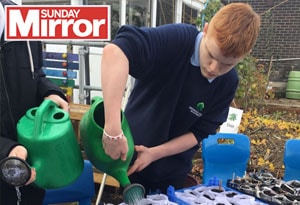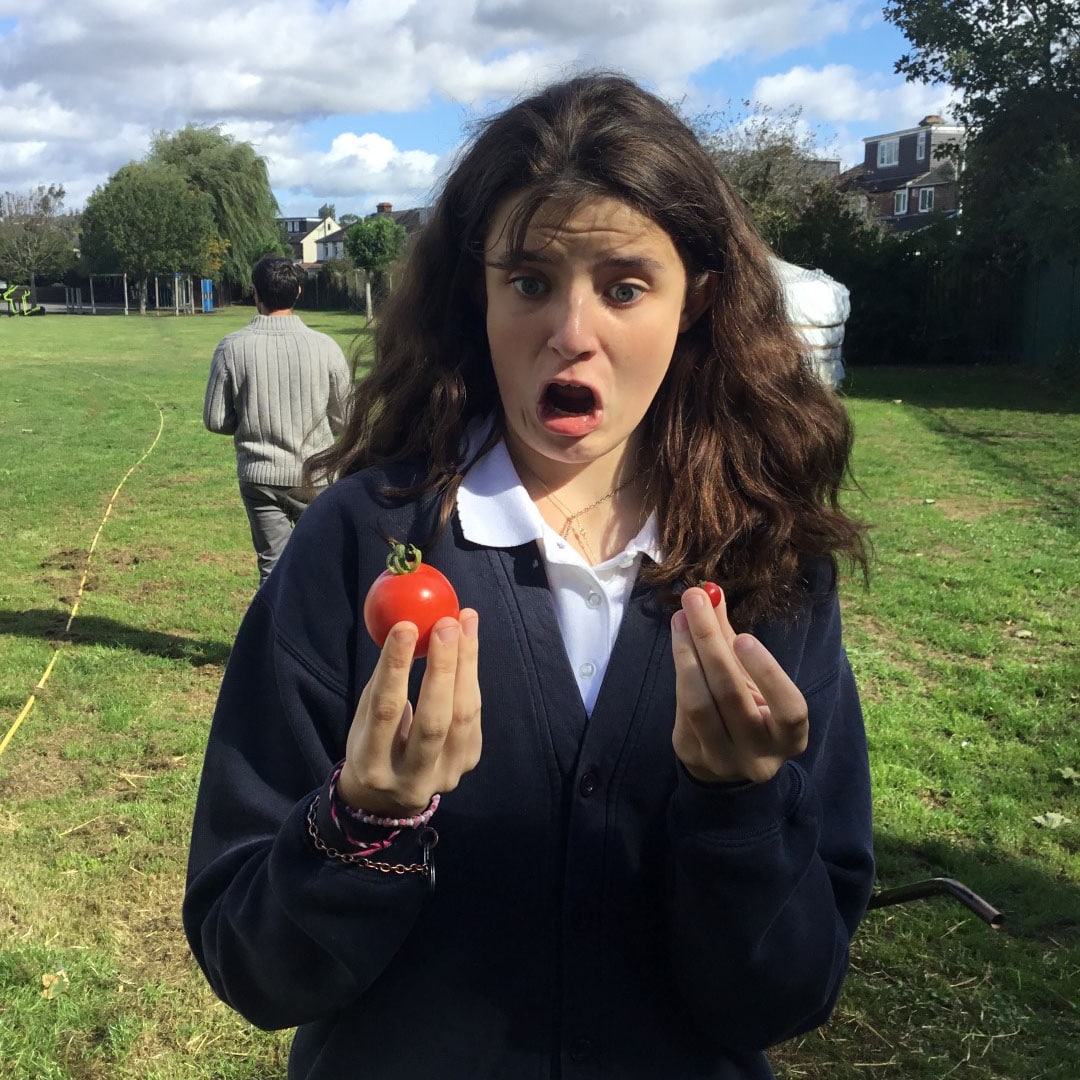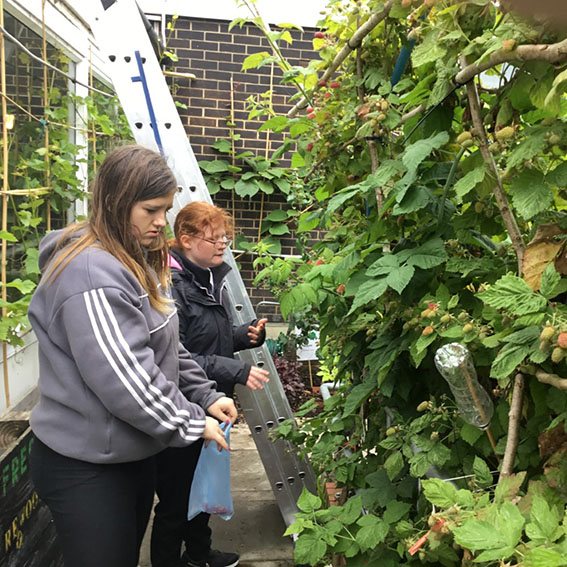Get to know: Redwood Park Academy – Sunday Mirror

Ed Bond - Horticulture teacher
Redwood Park Academy
Our story
The Redwood Park Academy garden is used as an educational space for 5 schools in the Solent Academies Trust where students have complex learning difficulties, physical disabilities or other additional needs.
The garden project started about 3 years ago, changing from an occasionally gardened space into a full time teaching area. The garden is used by students and young people from across our Trust (Solent Academies Trust). Mainly pupils from Redwood Park Academy and 6th formers from Mary Rose Academy, but the garden is available for all to visit and work in on specific learning tasks. All staff from across our Trust have the option of bringing groups to the gardens for the learning opportunities found here.
It isn’t unusual for the group specifically working in the gardens to be sharing them with another class who have come out to make use of the space.
Garden highlights
We have developed a set of 22 raised beds. With 8 of these found in the greenhouse or poly-tunnel. Other area of the garden now have edges with the aim of raising the soil level over time.
Around school there are a number of planters that we help to maintain. We do make hanging baskets of tomatoes or traditional flowers but mainly sell these rather than display them. We also have some large metal planters, old tin tubs, planted up with mint and oregano. But our most unusual planter is a retired kayak which we are developing for water plants. Although the leak which retired it also lets the water out.


The opportunities to cook and eat our produce are always very popular. Baby carrots and fresh peas at the start of the year and top fruit in the autumn. But the favourite must be adding tomatoes and herbs to a pizza to cook in our clay oven, which the students built themselves last summer.
Our chickens are also a firm favourite, with everyone enjoying coming to the garden to care for, watch and feed them.
What we grow
We try and grow as many different food crops as we can. Trying to show where and how as many familiar fruits, vegetables and herbs grow and develop.
Artichokes, bananas, carrots, ......... through to zucchini, we do aspire to grow the whole alphabet!
We also grow lots of flowers to decorate the school, to gift to people and to display at our leavers proms.
We have also just planted out a small orchard. A mix of apples, plums and pears to celebrate “love a tree day” with each class planting and adopting a tree.


Benefits
The evidence for mental and physical health benefits of garden are rightly becoming better and more widely recognised. We see the calming effects of working outside on our young people every day. Exercise and fresh air are only a small part of this. To move from being cared for, to be the carer, which nurturing and cultivating plants and animal causes, can be a great positive and enhancing step.
Our peaceful space can support quiet reflection and also communication and social interaction. The incidental learning opportunities (in maths, English and science for example) provided in one sessions gardening are almost unlimited.
Published in the Sunday Mirror

The Cultivation Street competition awards the best community and school gardens in the UK. These gardens are created to reflect the changes they want to see, so garden design is an important part of their identity. A fantastic example of this is Redwood Park Academy, in Portsmouth, where a dedicated team transformed an underused space into a full-time teaching area. It’s now used as an educational space for 5 schools in the Solent Academies Trust where students have complex learning difficulties, physical disabilities or other additional needs.
Ed Bond Horticulture teacher at Redwood Park Academy, explains a few of the features that they’ve incorporated. “The garden boasts a total of 22 raised beds, built at a variety of different heights. This enables them to be workable from the wheelchairs, standers or chairs of young people of all ages, there is a raised bed for every scenario. We also use large pictorial plant labelling throughout the gardens in a style all of our young people are familiar to make it easy to identify the produce they are working with.”
Sometimes there isn’t an obvious solution to a challenge, this is where Ed and his team get creative! “Where necessary we have adapted tools or developed our own unusual solutions; using giant funnels for filling pots, drainpipes for planting potatoes or flexible tree protectors as tubes to drop smaller seeds or bulbs down. We know that there is always a suitable task for everyone in the garden.”
Packed with an abundance of seasonal fruit and vegetables, this garden perfectly depicts how students can take on a major role in the design, build and maintenance of any green space, this care and consideration goes miles towards teaching them valuable life skills and positive interaction with nature and living things.
If you would like more information about the Cultivation Street competition, sponsored by Calliope®, visit cultivationstreet.com
This school found that when teachers lead by example it played a huge part in building the student’s confidence. Gabrielle continues, “It is important for staff to model engaging with nature, picking up insects and show them how to handle them sympathetically. Get your hands dirty and show them how liberating it can be.”
If you have stories about your school or community garden, make sure you enter the Cultivation Street 2019 competition, sponsored by Calliope® - visit cultivationstreet.com

